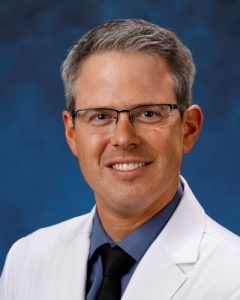
By Matthew Reed, M.D. | Hoag Hospital’s Pickup Family Neurosciences Institute
More than car accidents. More than suicide. More than gun violence.
Fentanyl overdose is the leading cause of death for people ages 18-49, a startling fact that prompted the Food and Drug Administration to approve naloxone (commonly known as Narcan) for over-the-counter sales in March.
Narcan reverses the effects of opioids (fentanyl, OxyContin, methadone, Vicodin and heroin) and can save a person from dying of an overdose. Since 2021, Hoag and other hospitals have handed out free doses funded by the state to people who cannot afford them or who have a prior history of drug use. But when it comes to issues of illicit drug use, not everyone wants to engage doctors and pharmacists.
For example, while pharmacists have had a standing prescription in many states to dispense Narcan to whomever requests it, of the nearly 17 million naloxone doses distributed in 2021, only 2.6 million were from pharmacies.
In the first three months since Narcan was made available over-the-counter, nearly 27,000 lives have been saved, according to a June 19 CDC report.
Still, it is not enough.
Though it appears opioid overdose deaths are declining slightly in 2023 from 2022, it is important to remember that in Orange County, the rate of opioid overdose deaths rose 88 percent between 2019 and 2020 alone. It will take more than over-the-counter Narcan for the nation – and our county – to turn the corner on this dreadful epidemic.
With teams of physicians, nurses, therapists and counselors, Hoag takes a multidisciplinary approach to addiction treatment. On a societal level, we have to do the same. Local, state and federal governments, law enforcement, health care, social services and faith-based organizations can accomplish more together than any one organization could alone.
One thing that you can do as a community member is learn how to administer Narcan. If you come across a person who shows symptoms of overdose – unresponsiveness and slow, shallow breathing – unwrap the nasal pump, insert the tip into the person’s nose and depress the plunger.
If the person is overdosing on opioids, Narcan should revive them within three minutes. If they have taken a non-opioid drug, Narcan will not work, but it will not negatively affect them, either.
The other thing you can do, if you or a loved one is struggling with opioid addiction, is to get help.
Hoag’s Addiction Treatment Centers program is an accredited program within Hoag Neurosciences Institute led by a team of knowledgeable, compassionate experts.
Fentanyl addiction in particular, and opioids in general, continue to wreak havoc on our country, our communities and our families. Together, we can make a difference and save lives.
For more information about our addiction recovery program serving Southern California, contact our staff at Hoag Addiction Treatment Centers today at https://www.hoagaddictiontreatment.com/contact/.
Dr. Mathew Reed is Chief of Service, Inpatient Pain and Outpatient Addiction, and Medical Director, SolMar Residential Program, in Hoag’s Pickup Family Neurosciences Institute. Triple board certified in psychiatry, pain medicine and internal medicine, he helps direct the expansion and integration of Hoag’s programs in neurobehavioral health.




